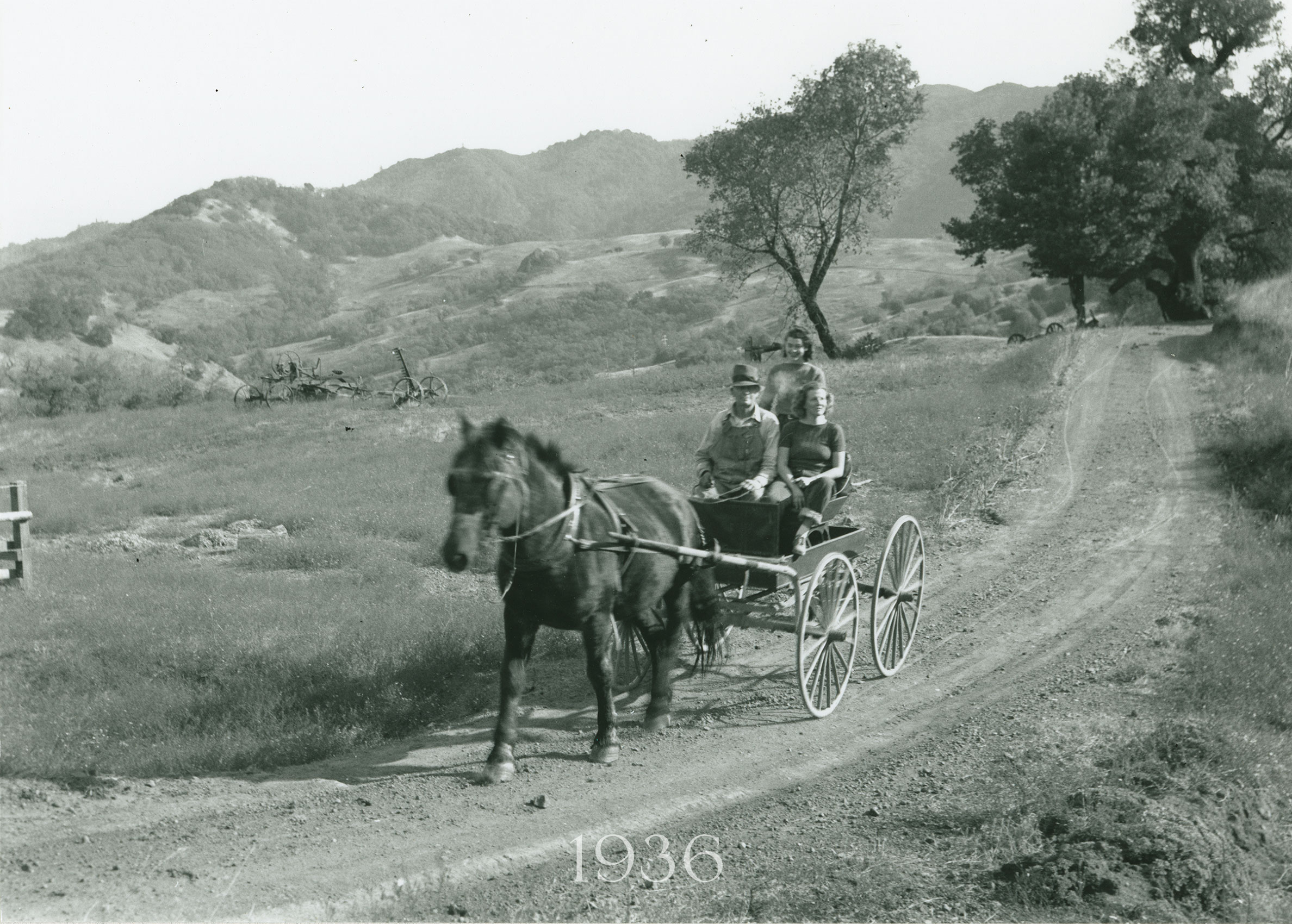
“It must be said that a project such as the Cain Vineyard would never exist without the vision, temerity, and vinicultural innocence of the Cains.” —Chris Howell
The Cain Vineyard: A Bit o’ History
The Cain Vineyard was born in 1979, when Jerry and Joyce Cain set out to find a piece of land in the mountains of Napa or Sonoma on which to plant a vineyard of Cabernet Sauvignon. Their thinking, as they retold the story after the fact, can be found in many newspaper articles of the 1980’s. Suffice it to say that anyone who plants a vineyard is a romantic—they have a dream.
In 1980, following a tip they got in a local coffee shop in Glen Ellen, they found their way to the historic McCormick Ranch, draped across both flanks of the Mayacamas Range, overlooking both Saint Helena and Kenwood. There they met Babe Learned, the granddaughter of the founders, Mollie Hudson McCormick and Henry Mixer McCormick. It is a family tradition that Mollie was the first US emigrant child born in California at the time of the Bear Flag Revolt (1846) when a small band of Yankees took possession of Sonoma from Mexico, and declared the “California Republic.”
That the Cains had the audacity to acquire nearly a square mile of rather barren mountainside, barely accessible via a three mile, one-lane, dead-end road (that’s Langtry), and plant it to grapevines, where none had grown before, was a testament to either their enthusiasm or their naiveté—most likely both. Other newcomers—now famous Napa Valley vintners, but then knowing just a bit more than the Cains—had looked at the property before: Warren Winiarski, of Stags Leap Wine Cellars, and Bill Harlan, of Harlan Estate. They both drove away, impressed and dissuaded by the magnitude and improbability of such a project. But the Cains took up the challenge and persisted. It must be said that a project such as the Cain Vineyard would never exist without the vision, temerity, and vinicultural innocence of the Cains. Decades later, the result is a wine that both Harlan and Winiarski know well, the Cain Five, which tastes like nothing else from either Napa or Sonoma. But back then, who knew? The Cains believed.
I first visited Cain in the Spring of 1986, when I was looking for a job. I met the Winemaker, Lester Hardy, now a good friend and neighbor in St. Helena. Then, again, I visited Cain during a Spring Mountain Open House, in either 1988 or 1989. By 1990, Lester had left, and another friend suggested that I might consult on the winemaking at Cain, so I drove up the mountain and sat down with Joyce Cain, who, in effect, hired me on the spot. I told Mrs. Cain that I would need to guide not only the winemaking but the vineyard. Looking back, I realize that, at that time, in the New World, virtually no so-called winemaker also managed the vineyard. In the Old World, the connection was commonplace. Today, I call myself Wine-Grower.
One of the best parts of this story came a year later, when I got to meet Napa Valley royalty, Babe Learned. I like to tell people that in the Napa Valley, you’re not a local if your grandmother wasn’t born here. Babe could say that. Some of the descendants of the original pioneers are still around, and they all know who they are. The rest of us are just newcomers.

Everyone who knew Babe was taken by her spark and vitality. It is the place of her family and heirs to tell her story more fully, but what I want to relate here is how she indoctrinated me into the history of the McCormick Ranch, what it meant to her, and what she hoped to preserve. Born in 1913, Babe had grown up in Saint Helena, and spent her Summers and holidays on the ranch, when she would ride her horse up the mountain along the dirt road beginning at the end of Spring Street. No telephone, no electricity, they were living “off-the-grid,” but they didn’t know it. Back then, that’s just the way it was. They were living among bears, mountain lions, coyotes and deer, with horses, maybe a cow for milk, and sheep—as many as a thousand of them.
McCormick Ranch was a sheep ranch covering nearly 3000 acres of remote mountainside. In the Spring here, it looks a bit like Ireland, with its precipitous, open grassy slopes. The sheep must have been right at home. [The sheep are back! See our post on Instagram.] Tending those animals and that ranch was always a labor of love, and an adventure, suited only to the stout-hearted. That was Babe. After she married, she took over the ranch, running it with her husband for over thirty years until she sold a piece of it, the heart of it, to the Cains. But Babe’s heart never left the ranch, and she held on to the vast majority of the land with the intent to preserve the spirit of the ranch. Today, through Babe’s efforts and her family, all of that land has been preserved intact as openspace, both in Sonoma and in Napa.
Now, some forty years on, the Cain project continues in the place and the spirit of the McCormick Ranch. It is an amazing place, as everyone who has visited can attest. Nonetheless, such a project could never have made it this far had it not yielded a wholly distinctive and compelling wine, the Cain Five.

—Christopher Howell, Wine Grower
2024

